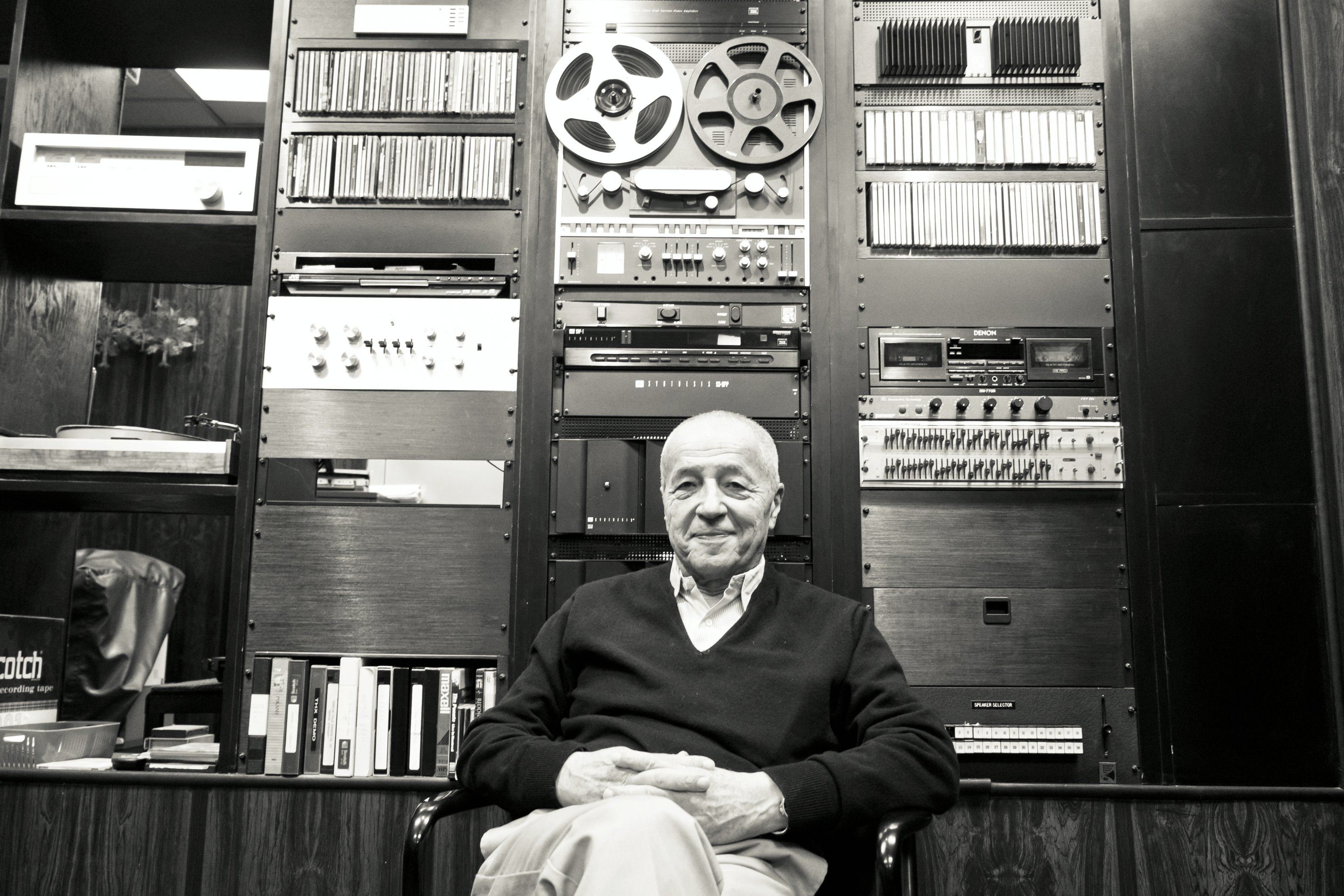The Evolution of DJ Mixers
From Bozaks and UREIs, through battle mixers, and on to the current range of industry standards and boutique options, a lot of time, research and customization has gone into the simple-sounding task of blending audio signals
Mixers are, at their most simple, a way to bring the best out of the sound feeding through them. Whereas the first wave of models did absolutely nothing more than blend signals together – which remains true of some modern descendants – the spiritual importance that began to percolate around DJing helped to propagate the idea that mixers can somehow get those in control of them closer to sonic perfection.
Tiny details can make or break a model – or even an entire company, should they lose a step. The sound of a filter or the placement of a crossfader are ruthlessly scrutinised. The evolution of mixer technology dovetails with the historical development of new techniques, the emergence of new musical genres and the increasing power of audio processing technology.
Brooklyn “go-go boy” Francis Grasso is widely credited as the first DJ to successfully attempt what we now understand as mixing, first extending records by playing two copies back to back, then eventually segueing between them on Rek-O-Kut and Thorens turntables. His initial experiments in the 1960s, cutting his teeth as a DJ around underground dance clubs Salvation II, the Haven and the Sanctuary, took place without any way of hearing the next track while lining it up.
At some point in the early ’70s he grew weary of this slapdash approach, and began using a custom-built stereo mixer which allowed him to listen to a separate cue mix on headphones without affecting the sound going out over the club’s system. That primitive mixer, nicknamed Rosie on account of its red paint, was created by soundsystem designer Alex Rosner, who hacked together headphone amplifier circuits to provide cueing options, along with level controls for a tape deck and two turntables, plus a microphone on/off switch.
The idea that a DJ should play music through a mixer is largely taken for granted these days, even though purists might eschew their use altogether. Segueing and blending from one record to the next gradually became the dancefloor norm through New York disco DJs such as Walter Gibbons, Nicky Siano and Larry Levan – David Mancuso thought otherwise. Rosner himself went on to play an instrumental role in the development of the first commercially available DJ mixers, urging his colleague Rudy Bozak to modify a mono public address system mixer into a stereo DJ mixer.
Rosner’s erstwhile employee Richard Long, who went on to design the soundsystem for the Paradise Garage, suggested that Bozak should add sends and returns to maximise sonic flexibility, sending and returning a unified signal from the mixer to any connected external devices, such as an echo box. A few design iterations later, the Bozak CMA-10-2DL mixer morphed into the accepted industry standard throughout the ’70s. The Bozak format was surprisingly close to what we’d expect from a DJ mixer today: six stereo channels (two phono, two line-level aux inputs and two mic inputs), each with a dedicated balance control. Cueing was switchable between the first four inputs, while the summed sound was fed through a master level control and independent two-band EQ controls for the stereo channels.
Shortly after the Bozak eventually fell out of production in the early ’80s, Hollywood-based company UREI released their 1620 mixer in 1983, based heavily on the Bozak circuitry but utilising integrated circuits rather than the discrete components employed by Bozak. The 1620 took over where the Bozak left off as de facto standard for house DJs.
When it comes to rotary mixers, everyone talks about sound or the haptics, but almost no one talks about the summation. But that is what a mixer does: it sums two or more sources. How the summing stage works is the biggest difference in how a mixer feels and sounds.
One of the many timeworn maxims of audiophile sound holds that the ideal amplifier should be “a straight wire with gain,” amplifying the sound without coloring, distorting or affecting it in any other way. It might seem logical that a similar idea should be applied to DJ mixers; on a basic level, they should blend the signals from the turntables and CDJs without changing the sound in any other way. However, most electronics engineers and sound techs would concede if pressed that the “straight wire with gain” isn’t really achievable in practice for various reasons; the same applies to an entirely neutral, uncolored mixer. More importantly, it isn’t necessarily desirable.
Laurin Schaffhausen is an audio engineer responsible for the design of Munich’s Blitz and a passionate historian of classic club soundsystems. Having tested original Bozak and UREI mixers alongside just about every major contemporary alternative, he points out that the classic DJ mixers color the signal substantially. This is not an inherently bad thing.
“A completely flat signal without any coloration can sound lifeless,” he explains. “Every mixer has a coloration of the sound – some very little, like the ARS 4100 or the Rodec MX series; some a lot, like the Super Stereo DN78 valve-based mixer. Original Bozaks and UREIs do not color the sound more than modern day mixers: The grandfather, the Bozak CMA-10-2DL, sounds drastically different to the modern Bozak AR-6. On a personal level, the coloration of the UREI fits my taste for dance music the most. If you directly compare the original UREI 1620 to a flat-sounding mixer, the UREI will make you feel like: ‘Turn up the music! Where is the dancefloor? Get the drinks out!’ It boosts the emotions in the music and I want to dance.”
Over the course of the 1980s, the dominant trend for DJ mixers shifted, largely as a result of the emergence of hip-hop and its associated mixing techniques. Early hip-hop DJs including Kool Herc and Grandmaster Flash required the ability to cut quickly, evenly and smoothly between two copies of the same record in order to extend breakbeats for dancers. The solution which eventually emerged was the crossfader, sometimes credited as an invention of Flash himself, although this seems like a slab of mythology that was handily left uncontested.
The first commercially available console with a crossfader was the Citronic SMP101, released to the British market in 1977. The GLI PMX 7000, released later the same year, brought a similar concept to the US market. The PMX 7000 employed straight, vertical faders to control the level of each input channel, plus a horizontal crossfader to blend seamlessly between the two phono channels. Although it only offered a three-band EQ on the master output rather than individual channel EQs, it’s not hard to see the similarities with modern straight-fader mixers, themselves derived from those that pinched the PMX’s layout en route to market.

By the early ’80s, the archetype of the hip-hop DJ mixer was already clearly defined: Usually just two channels, very basic features and a focus on durability and space around the crossfader to enable the cutting, scratching and chopping that defined hip-hop DJing. The standardisation of this layout over the course of the following two decades can be seen in the “battle” mixers favoured by scratch DJs. Early ’80s models like the DMC PMX-2, late ’80s models like the Technics SH-DJ1200 and even late ’90s models like the Vestax PMC-05 and PMC-07 all followed an incredibly similar layout and feature set. Hip-hop DJing was further switched up by the arrival of digital vinyl systems, freeing budding turntablists from the limitations of vinyl while allowing them to retain the feel and muscle memory of using it.
The top battle mixers, such as the Rane Seventy-Two, Pioneer DJM-S9 and Reloop Elite, combine the features of a DVS controller and audio interface with a traditional mixer. The Thud Rumble Invader (a collaborative effort between Qbert, Yogafrog, Hard Rich and Jesse Dean, with a land date of summer 2019) goes so far as to integrate a computer into the mixer itself, running software such as Traktor or Serato inside the mixer, along with a touchscreen, touch-sensitive pads, rotary controllers and traditional faders and crossfader.
Despite this trend toward straight-fader mixers from the ’80s onward, a sizeable number of house and disco diehards kept the faith with the old classics, using vintage Bozak and UREI mixers or newer rotary models by companies including Vestax and Rane right into the 21st century. In 2003, Parisian house and techno DJ Cyril Etienne, AKA DJ Deep, approached electronics engineer Jerôme Barbé with a request to repair his UREI 1620. As the process unfolded, the pair struck upon the idea of designing a new mixer inspired by the UREI.
Etienne’s friends and colleagues chipped in on the design process: Kerri Chandler suggested that the unit should be portable so that he could take it out on tour; Joe Claussell requested isolators for dramatic filtering effects. The result was the E&S DJR400, a compact, handbuilt mixer with a minimal feature set. Barbé and his assistant Dominique continue to solder the DJR400 by hand to this day, building around two units a week between them in E&S’s Paris workshop. The DJR400 helped set the scene for similar products from companies including Can Electric and Condesa, kickstarting a trend for house DJs in particular to fetishise the very concept of the rotary mixer.
A mixer’s a hard thing to make [for other people] because it’s so personal, so ultimately I’ve just made what I wanted.
One of the most commonly held misconceptions – owing in part to the calibre of veterans who have stuck with it through thick and thin – is that rotary mixers inherently sound “better” than fader-based mixers. The reality is that the control method has virtually nothing to do with the sound itself, barring minor differences between the specifications of potentiometers, the electronic components which sit behind the knobs on the front panel.
The sole reason why rotary mixers might sound better than straight-fader models comes down to the simple fact that the rest of the internal electronics tend to be designed with an emphasis on sound quality above all else. While other types of mixer prioritise features, effects and versatility, these boutique rotaries tend to be deliberately minimal and strictly analog, with all the attention (and money) spent on a top-quality signal path rather than adding fancy effects or digital features.
Setting aside the sound, rotary fans make a compelling case that the ergonomics of the approach do make a difference. It’s far easier, they argue, to twist a knob smoothly than it is to do the same with a straight fader, which empowers DJs to make long, gradual blends rather than the faster chops and cuts associated with hip-hop DJing. The way that the gain of the signal is affected by twisting hand movements also feels different to pushing and pulling along a linear path. Whether rotary or straight-fader, most mixers use logarithmic potentiometers for gain control in order to parallel the nonlinear way the human ear perceives the volume of sounds, but rotary fans believe that the twisting motion makes it easier to set levels with precision, conferring a degree of accuracy that straight faders can’t match.
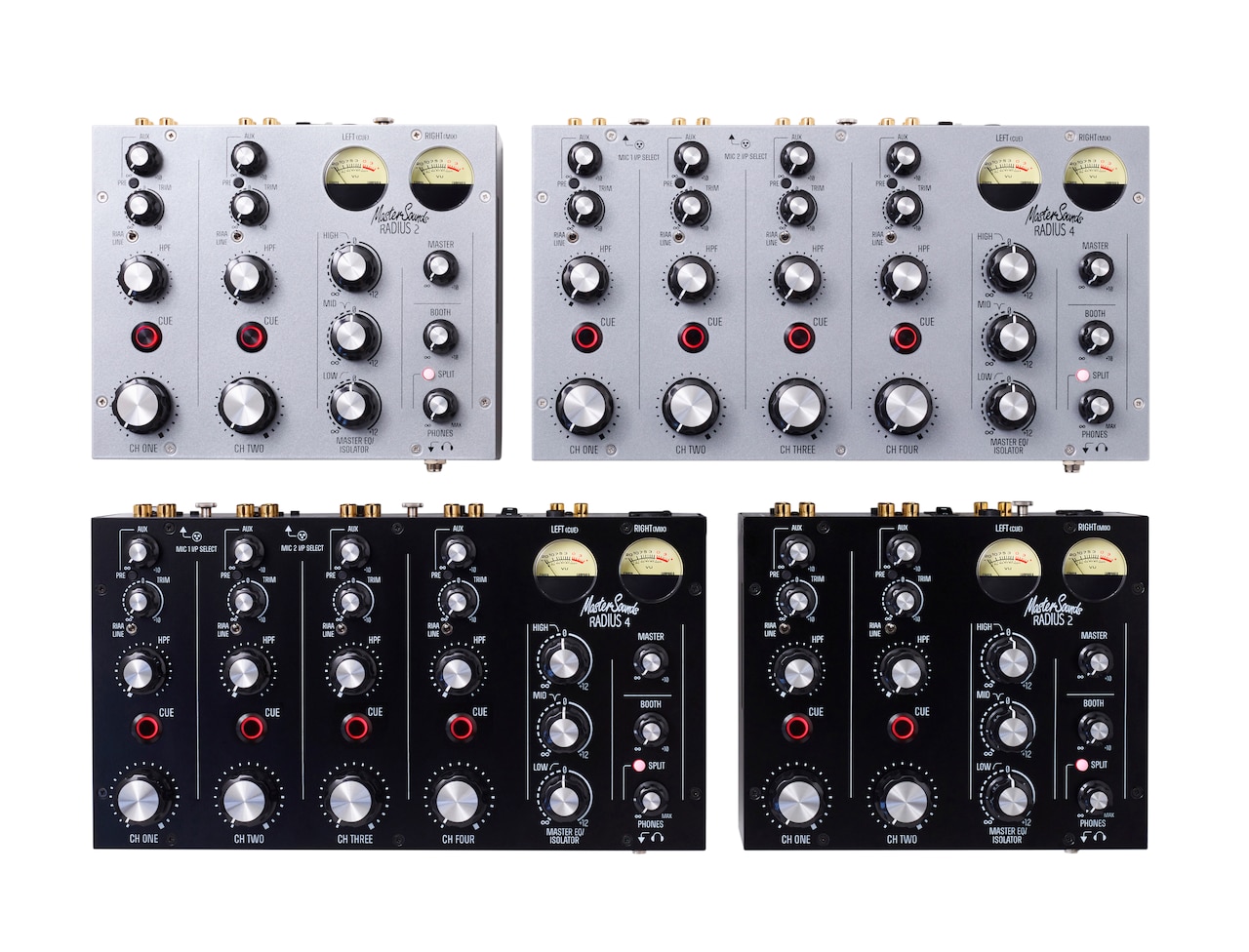
Schaffhausen offers a reminder of the fundamental purpose of mixers: “When it comes to rotary mixers, everyone is talking about sound, some are talking about the haptics, but almost no one talks about the summation. But that is what a mixer does: it sums two or more sources. How the summing stage works is the biggest difference in how a mixer feels and sounds.”
He is also keen to stress that all of the modern breed of “boutique” DJ mixers are good: “Everyone is looking for ‘the best.’ But my best can be vastly different from your best.” His best, as it happens, is the MasterSounds Radius 2. “It is super small, very easy to carry to a gig and set up, even in a small both. It has a massive coloration, but a very tasteful one. Normally I do not use any EQ in the channels, but I like filters – and that filter is surreal. If you cut out the bass it’s like traveling back in time, telling the guy in the studio to mute all the low end. Crazy!”
The Radius is part of a small range from Stockport-based Mastersounds, founded by DJ and engineer Ryan Shaw. The development of the Radius mixers came about by chance when Shaw went on a “long and fruitless” search for an Allen & Heath Xone:V6 rotary mixer, eventually tracking one down and phoning the seller, who turned out to be the original mixer’s original designer, former Allen & Heath engineer Andy Rigby-Jones.
“We developed a relationship and decided to build our Radius 2,” Shaw explains. “Both Andy and I run our own companies, so we’re not constrained by accountants. Our products are designed with the esoteric principles of sound and simplicity in mind. The design concept for the Radius 2 was the opposite approach to [most] models: we designed a super simple feature set, replacing the three-band EQ with a natural-sounding high-pass filter, negating the use of EQ per channe and offering a musical master EQ/isolator for adding and subtracting frequency in the mix.”
On a technical front, the current flagship mixers from market leaders Allen & Heath and Pioneer feel like they come from an entirely different universe to a Bozak, a UREI or even one of the modern boutique rotary mixers. Both brands combine analog and digital features in different ways, but the design rationale is broadly similar. Given that they’ll typically be installed in clubs where a variety of DJs play, these all-rounders are designed to provide the most versatile options for a range of DJing styles, reflecting the diversity of approaches.
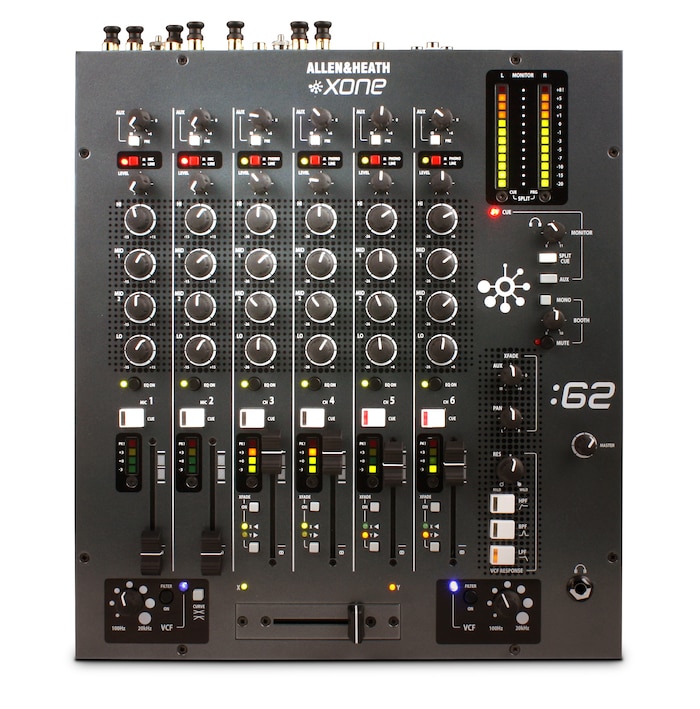
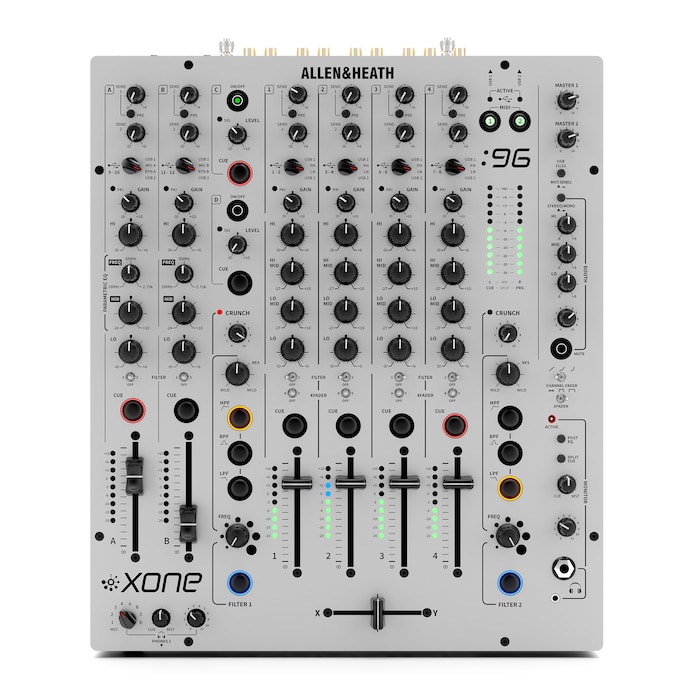
Allen & Heath’s David Morbey is senior product manager for the company’s Xone range. He explains that A&H had already been making high-end studio/live sound mixing desks for around 30 years before they produced their first DJ mixer, the Xone:62, in 1999. “We’ve used the same ethos when it comes to producing DJ mixers,” he says. The company doesn’t have a dedicated mixer design team, but members of various departments including digital, analogue, mechanical and software development work flexibly, contributing to all products, including the Xone range.
If Francis Grasso’s early experiments with musical segues inspired the creation of the very first DJ mixers, that idea has been taken to extremes in recent years by the proliferation of DJs getting involved in the design process, pushing manufacturers to add features and develop new products. As with most commercially produced music gear, A&H’s DJ mixers go through years of development and testing before being released to the public. “Many of our design team have a DJ background,” Morbey explains. “The initial concepts are very much born from an in-house idea and then directed by their input as well as our end-users’ input.”
“We spent a lot of time refining the EQ shape and sound on the Xone:96, conscious that soundsystems have moved on dramatically in the last 15 years,” he says, with input drawn from over 30 or so DJs from all across the (stereo) field. “We wanted to offer the best sound possible, without losing the character of the :92 that users love, and which made it an industry standard.”
Other DJs have gone to extremes in order to carve out a unique lane, teaming up with manufacturers to design models for personal use. Floating Points helped develop a bespoke rotary mixer with Isonoe for sadly departed London club Plastic People. The same brand also developed a custom mixer for permanent installation in London listening bar Spiritland. Richie Hawtin’s PLAYdifferently MODEL 1 was developed in conjunction with Rigby-Jones. Richie’s dad, Mick, even built him a custom 10-channel version as a Christmas gift.
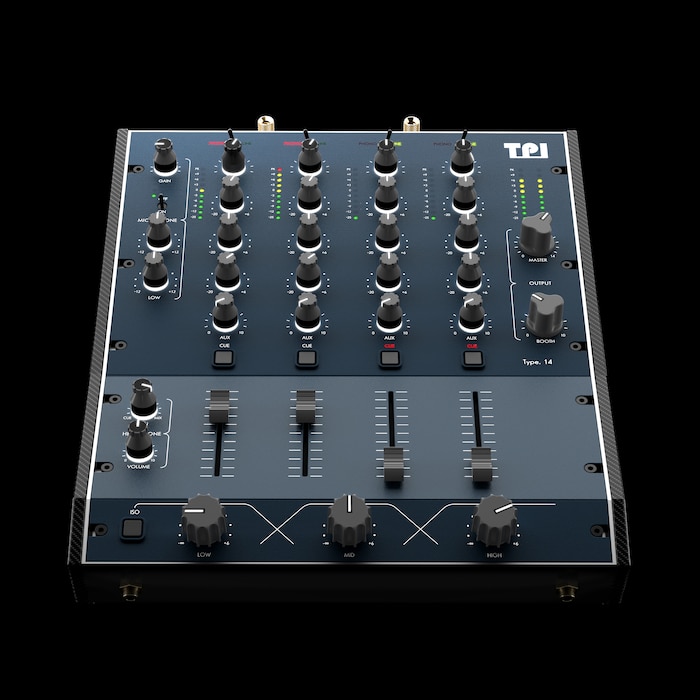
But with just about every base covered, from budget models through to one-off designs, is there anywhere left to go? Allen & Heath’s Xone:92 has remained the company’s flagship model for over 15 years, a longer stretch of time than that separating the Rosie and the DMC PMX-2. This suggests that there aren’t many improvements left to make. Has mixer design peaked?
One company vocally thinks otherwise. Leicester-based TPI Sound are currently best known for their cutting-edge Totem soundsystems, a familiar sight to anyone who frequents London events linked to Phonica Records, or various interconnected bars and clubs clustered around Peckham’s Rye Lane. Alongside the company’s range of turntable isolators, amplifiers and studio monitors comes a DJ mixer that they say the next generation of the technology. The Type. 14, described by TPI founder Giles Smith as a “money-no-object” option, uses genuine military-grade components (the control panel is made by the same engineers who produce cockpits for Eurofighter jets and nuclear submarines) and bespoke components to make any given audiophile grin.
Smith understands the appeal of the way some ostensibly audiophile DJ mixers are packaged and presented, but he points out that the underlying electronics in some cases is “cookie cutter” design and “not much more than GCSE electronics,” taking simple circuit designs and putting them together in a nice case with some vintage-style VU meters and mid-range components.
The Type. 14, he contests, has been designed from scratch to be empirically as good as possible. “Its measured performance figures are up with the best laboratory-grade and studio-grade equipment in the world,” he explains – then there’s the hefty order price, which reflects the fact it’s a large step above anything else on the market. “A mixer’s a hard thing to make [for other people] because it’s so personal, so ultimately I’ve just made what I wanted,” Smith concedes.
This speaks to a common truth: no matter how much time, research and compulsive tweaking is devoted to finessing it, music retains a subjective quality. So too are the mixers built to blend, color and ultimately serve the music. Functionality is prized by some, audio quality by others, and a nice clean swish on the dials by others still. The collective experiences of how dancefloors move are sent and returned through their circuitry – something, hard as some try, you just can’t tally.
Header image © Ella McClary / Allen & Heath
